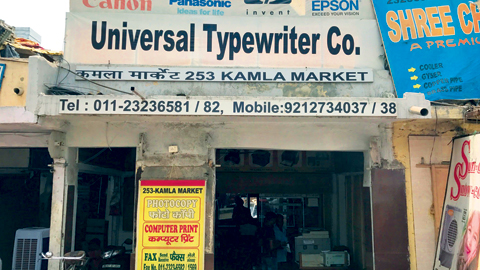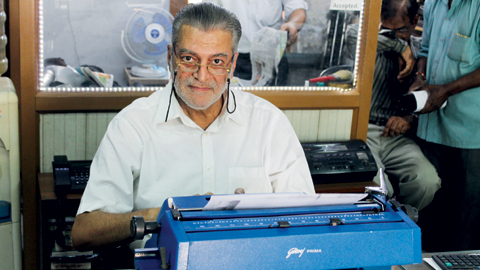The country’s romance with the typewriter is far from over, says Brunswick’s Khozem Merchant
For a measure of the typewriter’s role in the Partition of Imperial India – seriously – consider the following quote by the founder of Pakistan, Mohammed Ali Jinnah: “I will tell you who made Pakistan. Myself, my secretary and his typewriter.”
Is that irreverence from the enduringly joyless Jinnah? It certainly remains a matter of mirth today for Rajesh Palta, a third-generation typewriter dealer and repairer in Delhi and a beguiling raconteur of typewriter tales.
“Typewriters are long-distance runners,” he says, as we tour his tiny shop, a dusty tutorial on the history of the contraption. “Electronic typewriters last 10 years; laptops can be upgraded in a year. But manual typewriters can endure for 50 years without much repair.” Fixed and repainted by hand, these behemoths are on sale at Palta’s Universal Typewriter Co, an outlet representing a cottage industry of collectors, admirers, users and repairers of the indefatigable instruments.
When Pakistan was yet putative, Palta’s father, Diwan Chand Palta, a salesman for the American typewriter manufacturer Remington, fled the city of Lahore, inside present-day Pakistan. He took with him four boxes containing the best-selling Model 12 machines, on whose keys the history of India was both made and recorded. Foreign brands held a monopoly under Imperial rule at the time; independent India sought an indigenous model. Such a product carried a message of empowerment, economic self-reliance, national modernity – and, of course, it allowed useful things to get done, in triplicate. Today, the continued popularity of the old machines serves as a mild, homegrown rebuke to the global craving for up-to-the-minute upgrades.


